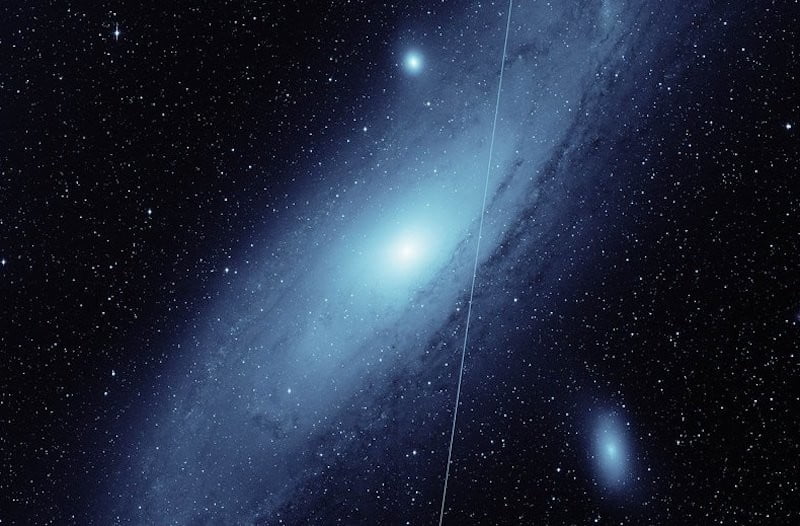As SpaceX sends another rocket to space this week on a mission to expand its Starlink constellation to around 2,000 satellites, astronomers are poring over a newly released report assessing the satellites’ impact on deep space observations.
Ever since SpaceX began deploying batches of Starlink internet satellites in 2019, astronomers have been expressing concerns about how sunlight reflecting off the small devices could obscure their view of space and impact their work.
To assess their impact, a team led by former Caltech researcher Przemek Mróz studied archival images captured during twilight by the Zwicky Transient Facility (ZTF) at Caltech’s Palomar Observatory near San Diego.
The team’s findings, which appeared in the January 17 issue of The Astrophysical Journal Letters, revealed that while in 2019 only 0.5% of twilight images showed streaks from Starlink satellites, that figure had increased to 18% by August 2021, suggesting that if SpaceX expands its constellation to 10,000 (for which the spaceflight has already received deployment approval), then pretty much all ZTF images captured during twilight will be affected.
We found that twilight observations are particularly affected: a fraction of streaked images has increased from less than 0.5% in late 2019 to 18% in August 2021. Once SpaceX deploys 10,000 Starlinks, essentially all ZTF images taken during twilight may be affected. pic.twitter.com/5f8tKaSHlk
— Przemek Mróz (@przemroz) January 17, 2022
However, study co-author Professor Tom Prince of Caltech noted that a single streak of light from a Starlink satellite affected less than one-tenth of a percent of the pixels in a ZTF image.
“There is a small chance that we would miss an asteroid or another event hidden behind a satellite streak, but compared to the impact of weather, such as a cloudy sky, these are rather small effects for ZTF,” Prince said.
In 2020, SpaceX chief Elon Musk said he wanted to work with astronomers to ensure that the Starlink satellites didn’t interfere with their work.
To that end, SpaceX started adding visors to its satellites to reduce the brightness of the reflection. The team investigated the effectiveness of visors and found that with the ZTF observations, the attachment reduced a satellite’s brightness by a factor of about five — a level that fails to meet standards outlined by a 2020 Satellite Constellations 1 (SATCON1) workshop that brought together active astronomy groups.
Prince said that software could help to overcome potential problems — for example, using computer smarts to forecast Starlink satellite positions, enabling astronomers to plan their observations for the clearest view. Software can also be used to work out if a passing satellite adversely impacted an observation that’s already taken place, allowing astronomers to view the resulting image in the appropriate context.
Mróz said his team didn’t expect Starlink satellites to affect non-twilight images but warned that if the other companies’ satellite constellations are deployed in higher orbits, non-twilight observations could also be impacted.
Editors’ Recommendations

